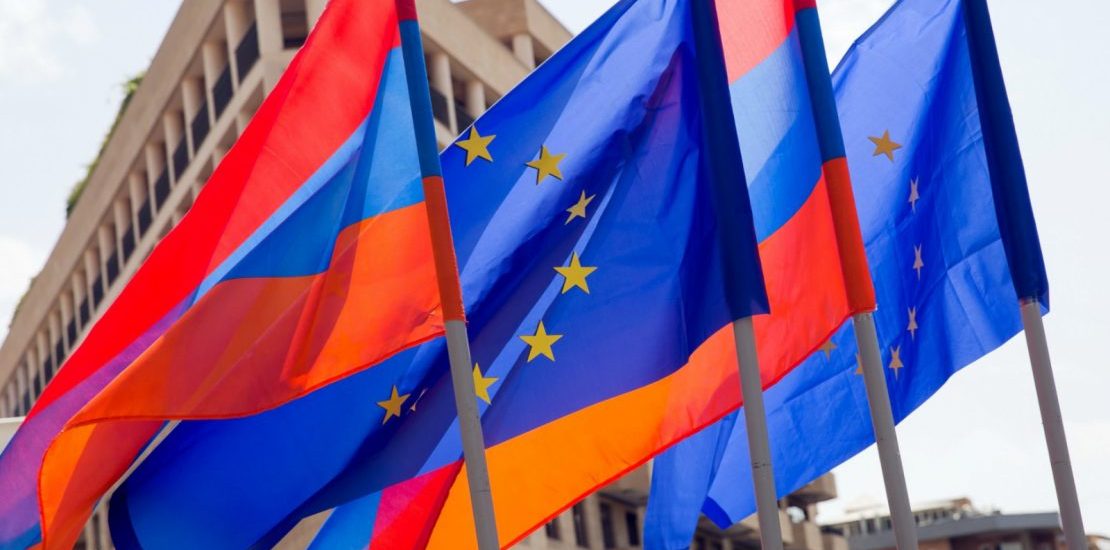- 2 March, 2021
- Economy and Energy

On February 10, the European Union notified Armenia of the completion of the ratification process of the Armenia-EU Comprehensive and Enhanced Partnership Agreement (CEPA). It will come into force on March 1.
The agreement was signed in November 2017 in Brussels and was awaiting ratification by the parliaments of all EU member states.
It brings the bilateral relations of the Republic of Armenia and the European Union to a new level of partnership, regulating the dialogue in the political and economic sectors, as well as sectoral cooperation and trade relations.
In fact, this agreement marks the next stage of Armenia-EU relations, which implies deepening and strengthening of bilateral trade and economic ties, visa facilitation, strengthening of partnership in the field of protection of human (labor, consumer) rights, transparency of business environment, building a democratic society, start of another stage of reforms in public administration and a number of other sectors.
In this article we will talk about the economic component of this agreement, and will try to understand what opportunities will be created for the development of the domestic economy.
Trade turnover
Since 2009, Armenia has been making use of the EU’s “Generalized System of Preferences” (GSP +) for sustainable development and effective governance, and since 2014, by the decision of the European Commission, Armenia has entered a new phase of the revised EU GSP+ preferential trade regime, which allows to export more than 6200 products of Armenian origin to the EU market with zero or reduced customs duties.
As a result of the implementation of the agreement, the parties should not discriminate between imported products and similar domestic products. Nevertheless, EU member states buy mainly raw materials from Armenia, as the non-compliance of local production standards is a serious obstacle to bringing Armenian products to the European consumer market.
By the way, in recent years, exports from Armenia to EU member states have fallen sharply. In 2018, the export of goods from Armenia to EU member states amounted to $ 684 million (28․4% of exports), and in 2019 this figure decreased by more than USD 100 million, amounting to USD 583 million (22․1%). Last year Armenia exported about $ 430 million worth of Armenian products to EU member states, which is only 16.9% of exports.
Note as an example that in the case of Armenian brandy, 24 years after the agreement enters into force, Armenia will be banned from producing beverages called “cognac”. In that period, the EU will help Armenian brandy producers complete the rebranding process, and the renamed product will have free access to the EU market.
It should be reminded that at the moment Armenian brandy is exported to the former USSR member states under the name “cognac”, and the name “brandy” is used for exports to the EU.
This means that the introduction of standards and the combination of opportunities created by the agreement will give small and medium-sized businesses an opportunity to bring competitive and demanded products to the European market.
The agreement envisages deepening cooperation in the fields of finance, transport, energy and nuclear security.
Finance
The European Union will assist Armenia in ensuring the independence of the Central Bank, price stability, stable public finances, a stable foreign currency exchange rate system and balance of payments.
The agreement shall enable the parties to improve international cooperation in the tax sector, facilitate the process of tax revenue collection, implement reforms aimed at transparency and fair tax competition. The parties shall seek to expand cooperation on transfer pricing and anti-offshore regulation.
Transport
The Parties shall expand and enhance their cooperation in the field of transport in order to promote the development of sustainable transport systems, efficient, safe and secure transport operations, and seek to expand the main transport links between the countries.
The cooperation is aimed at improving the movement of passengers and goods, by increasing the continuous flow of traffic, promoting the existence of open borders with cross-border movement through eliminating administrative, technical and other obstacles, expanding the operation of existing transport networks.
Air transport tailored to the mutual commercial needs of the Parties shall be systematically developed and gradually liberalized.
Nuclear security
As a result of the implementation of the agreement, EU assistance is envisaged for the closure and safe shutdown of the Metsamor NPP, as well as the development of replacement capacities.
Taking into account the fact that the share of the Metsamor NPP in the total generation of electricity in the republic is about 40%, Armenia will face serious energy issues with its closure.
Taking into account the energy security of the Republic of Armenia and the need to replace the nuclear power plant, the agreement also envisages the adoption of an action plan for its replacement as soon as possible.
In other words, the agreement envisages the creation of new energy sources equivalent to the capacity of the nuclear power plant in the shortest possible time.
You can read about the inevitable closure of the Metsamor NPP and the importance of creating alternative energy sources by following this link.
To sum up, we should note that the ratification and implementation of the agreement gives an opportunity to integrate more smoothly into the EU economic bloc due to the reforms to be implemented in a number of sectors of the economy in the future.
Sevada Ghazaryan
Union of Informed Citizens




